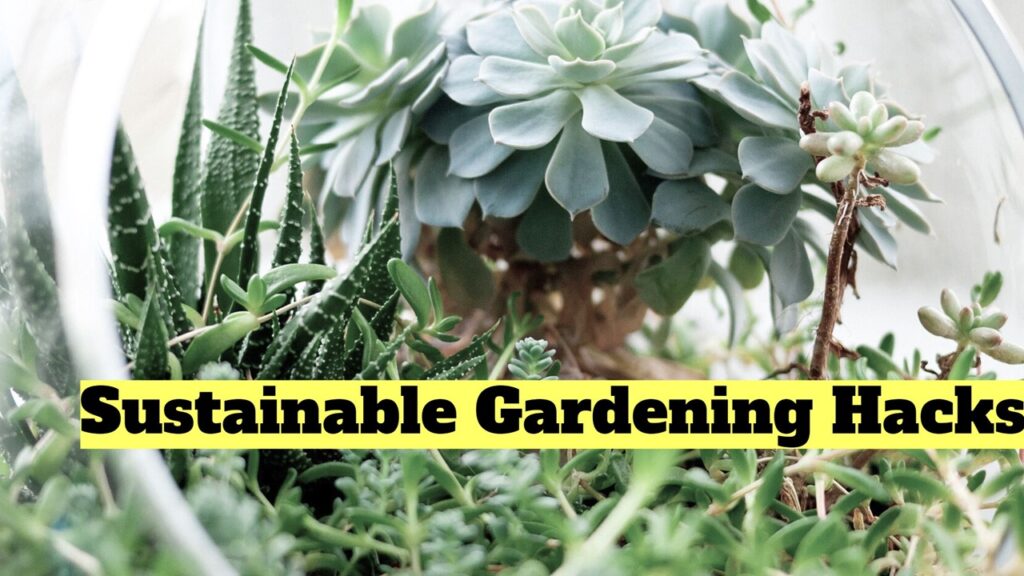Embracing sustainable techniques in your gardening endeavours can significantly enhance both the health of your plants and the environment in which they thrive. From conserving water to nurturing biodiversity, sustainable gardening is a holistic approach that benefits not just your garden but the planet as a whole. Moreover, you can consider sustainable gardening products by brands like Green Genius to elevate your green space into a sustainable oasis. Here are some sustainable gardening hacks that you must follow:

Native Plant Selection
Opting for native plants is a foundation of sustainable gardening. Indigenous flora are adapted to the local climate and soil conditions, requiring minimal maintenance once established. By planting native species, you not only conserve water but also support local ecosystems by providing habitat and food sources for native wildlife. Harness the power of reputed brands like Green Genius by researching indigenous plants that thrive in your region and incorporating them into your garden design.
Composting
Transforming just kitchen scraps and garden waste into nutrient-rich compost is a hallmark of sustainable gardening. Composting diverts organic matter from landfills while also enriches the soil, promoting healthier plant growth. Utilise composting techniques such as layering green and brown materials, turning the compost regularly, and maintaining proper moisture levels. Incorporating compost into your garden beds helps in enhancing soil structure, fertility, and microbial activity.
Chemical-Free Pest Control
Bid farewell to harmful pesticides and embrace natural pest control methods aligned with sustainable principles. Encourage beneficial insects like ladybugs and lacewings. They prey on garden pests like aphids and caterpillars. Companion planting, where mutually beneficial plant combinations deter pests and attract beneficial insects, is another effective strategy. Additionally, practising crop rotation disrupts pest life cycles while enhancing soil health and fertility.
Rainwater Harvesting
Harnessing rainwater for irrigation is a sustainable practice that conserves precious freshwater resources. Install rainwater harvesting systems at your home, such as rain barrels or cisterns. This helps to capture and store rainwater from your roof. The harvested water can then be used to irrigate your garden, reducing reliance on municipal water supplies. By incorporating rainwater harvesting into your gardening routine, you conserve water and reduce stormwater run-off and erosion.
Sustainable Garden Design
Elevate your green space by incorporating garden design principles that prioritise sustainability and biodiversity. Integrate elements such as rain gardens, which capture and filter stormwater run-off while providing habitat for native flora and fauna. Implementing permeable paving materials allows rainwater to infiltrate the soil, replenishing groundwater supplies and reducing urban heat island effects. Embrace low-maintenance landscaping techniques that minimise water usage, chemical inputs, and labour while maximising ecological benefits.
Education and Community Involvement
Spread the ethos of sustainability by educating others about sustainable gardening practices and actively participating in community initiatives. Attend workshops or events to share knowledge and resources on topics such as composting, native plant gardening, and water conservation. Collaborate with local schools, community centres, or gardening clubs to establish communal gardens or green spaces that promote environmental stewardship and community engagement. By empowering others to adopt sustainable gardening practices, you amplify the impact of your principles beyond your own green space.
By embracing sustainable and green principles in your gardening practices, you can cultivate a vibrant and sustainable green space that nourishes both plants and the planet. From native plant selection to chemical-free pest control remedies by brands like Green Genius, each sustainable gardening hack contributes to a healthier ecosystem and a greener future. Let such practices guide your gardening journey toward sustainability and environmental stewardship.
Contents




